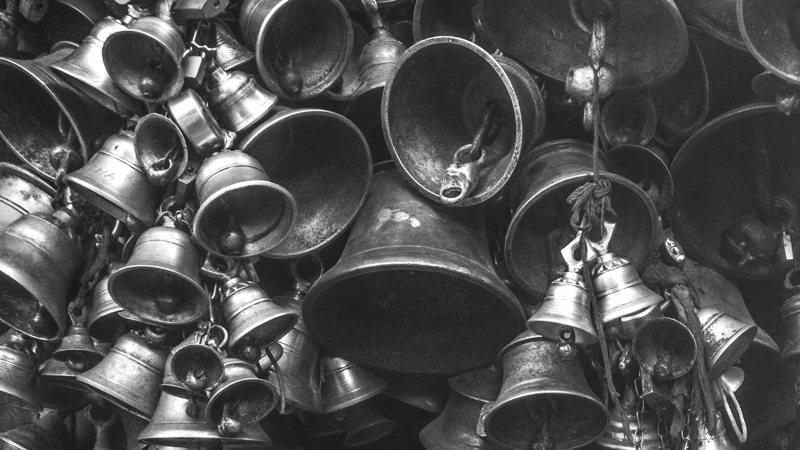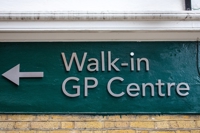
For the past 25 years or so, macroeconomics has been the “dismal science”. All the fun was in micro. Peering into 2022, however, economists and policy-makers have been dusting off their old macroeconomic textbooks, because inflation has begun to sound the alarm bell. How easy is it going to be to switch it off?
For decades, the economic fun and brains have been drifting to microeconomics, deploying the expanding toolkit of behavioural science and data analytics that Frontier uses in much of its work for clients. The bestsellers that made economics more popular - Thinking Fast and Slow, The Undercover Economist - drew on similar micro insights. Environmental economics required new insights into the impact of incentives and disincentives on human behaviour - all food for the behavioural scientists.
Meanwhile, “quantitative easing” was just about the only major macroeconomic policy innovation. Come a crisis, governments threw money at the problem and central banks absorbed the debt. Prices didn’t budge. So while everyone assumed there would have to be an unwinding: but this year and next year became sometime, even never.
Now, however, inflation is lacerating policy-makers’ nerves. It’s way above their declared objectives: the UK Consumer Price Index surprised by rising 5.1 per cent in the year to November, and the Retail Price Index (which still drives quite a lot of other prices adjustments) rose by a whopping 7.1 per cent. Flash figures for the Euroarea put the inflation rate at 6 per cent in Germany, 5.4 per cent in Spain, though only 3.4 per cent in France. In the US, the 1-month rise in consumer price inflation had reached 6.8 per cent by November, and the Producer Price Index registered an increase of 9.6 per cent.”.
The immediate pressures are clear enough: energy price spikes and supply chain blocks and breakages as economies roared back to life after lockdown interruptions. If that were all, it might be easy to believe inflation would quickly return to the unthreatening levels we’ve seen for a generation. Oil prices aren’t actually that much higher than before Covid, although gas prices - particularly in Europe - have seen a more serious shift. Supply chain problems should ease.
Who pays?
But here’s the rub. One person’s price rise is another’s cost increase, so the big question is: what will happen in transmission? And this is where the old textbooks are needed - with the UK, it’s generally agreed, likely to act as an all-too-interesting test case.
The past 25 years have seen a dramatic opening up of markets, since the creation of the World Trade Organisation. And this includes the market for people. The resulting increase in competition and economic efficiency helped keep inflation low even in periods of commodity price pressure. The UK was possibly the most dramatic example of this change. In particular, its labour market was transformed by European integration.
Rising and persistent inflation in the 1960s and 1970s had made the UK “the sick man of Europe”. Even though price inflation was checked by recession at the beginning of the 1980s, labour costs never rose by less than 7 per cent a year throughout that decade. Not until the integration shocks of the 1990s did these fall to a level consistent with a low inflation target.
Those with very long memories may recall that economy policy used to be focused on the “Phillips curve” and the “NAIRU”, or non-accelerating inflation rate of unemployment, the belief being that if growth in demand drove unemployment below that level, a hot labour market would begin to drive up or accelerate inflation. The idea died hard: as late as 2013, the Governor of the Bank of England was giving “forward guidance” that a drop in the UK unemployment rate below 7% would trigger a shift in monetary policy; that quickly changed as unemployment went on falling until by late 2018 it was below 4 per cent, without any marked impact on inflation.
Work it out
How come? Well, the jobless rate gave only a partial picture of the UK labour market: more British people became “economically active”, so employment could rise by more than unemployment fell. But more importantly, we had become part of a continental labour market: as demand rose, we could continue to absorb jobseekers from eastern Europe.
Now, of course, our labour market has been closed by Brexit. The perforations in its barriers - immigration “windows”, and illegal immigration - are proving to have only a limited effect on supply. And the long slog through COVID seems to have reversed the domestic trend towards a higher labour market participation rate, a puzzle yet to be unravelled. If macroeconomics is back in the headlights, there’s still plenty for the behavioural scientists to do.
Labour shortages have appeared in business sectors ranging from health and social care to construction, transport and hospitality. The Prime Minister has been loudly urging private companies to pay more to get the people they need, advice which must (sooner rather than later) be applied to the government’s own massive labour shortages, particularly in the short-staffed, over-pressured NHS and social care system.
Of course these labour shortages are showing up in other parts of Europe too, particularly Germany, and in parts of the United States, where rapid economic recovery is upping the pressure for action. Given the historical fear of inflation in Germany, its new government faces particular public anxiety. But both Germany and the US have continental-sized labour markets with plenty of internal flexibility. So economists are keeping a particularly beady eye on the newly-closed labour market of the UK.
Has low inflation become so embedded in our expectations that we will sweat out the price rises, and “the new normal” will soon look very like the old? Or are we at the beginning of an old-style price-wage-price spiral, requiring a monetary policy that chokes off demand? If so, history suggests we will have to drive unemployment rates significantly above where they are today.
Has the party started?
This week will see a raft of monetary policy decisions from the world’s central banks. In November, the Bank of England provoked criticism by creating expectations of an interest rate tweak, only to hesitate at the touch. One at least of its Monetary Policy Committee members has made public his dissension.
New COVID restrictions have now given the economy another knock, and the Bank a further headache. Raising rates just as lockdowns loom doesn’t show much Christmas spirit. “Stagflation” is the word on the market’s lips, as at the December meeting the Bank inched its key rate up from 0.1% to 0.25%, while leave the level of quantitative easing unchanged. It still leaves a big question in observers’ minds. What will happen as the economy revives again? Is the Bank brave enough to remember the old adage of NAIRU days, and take away the punch bowl before the party actually gets going?
Guest Author: Baroness Sarah Hogg, Former Frontier Economics Chairman



